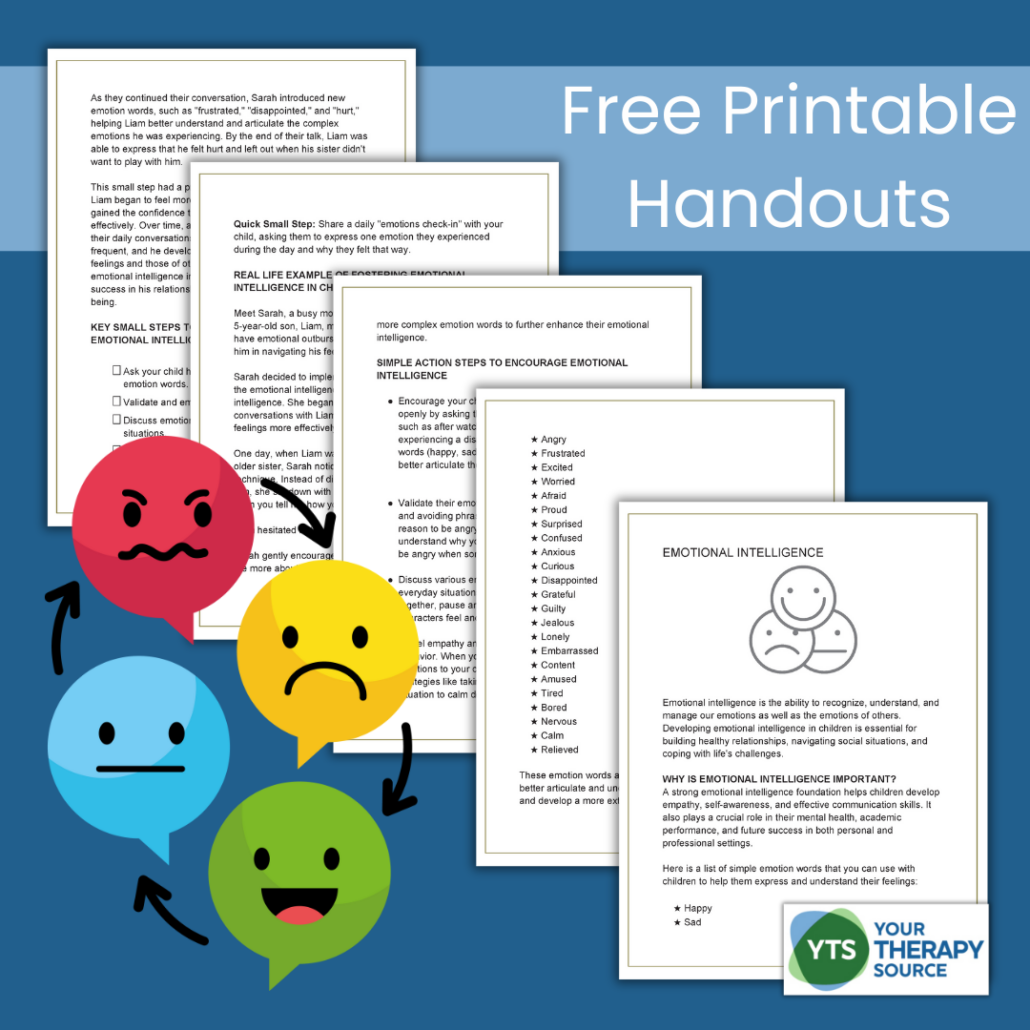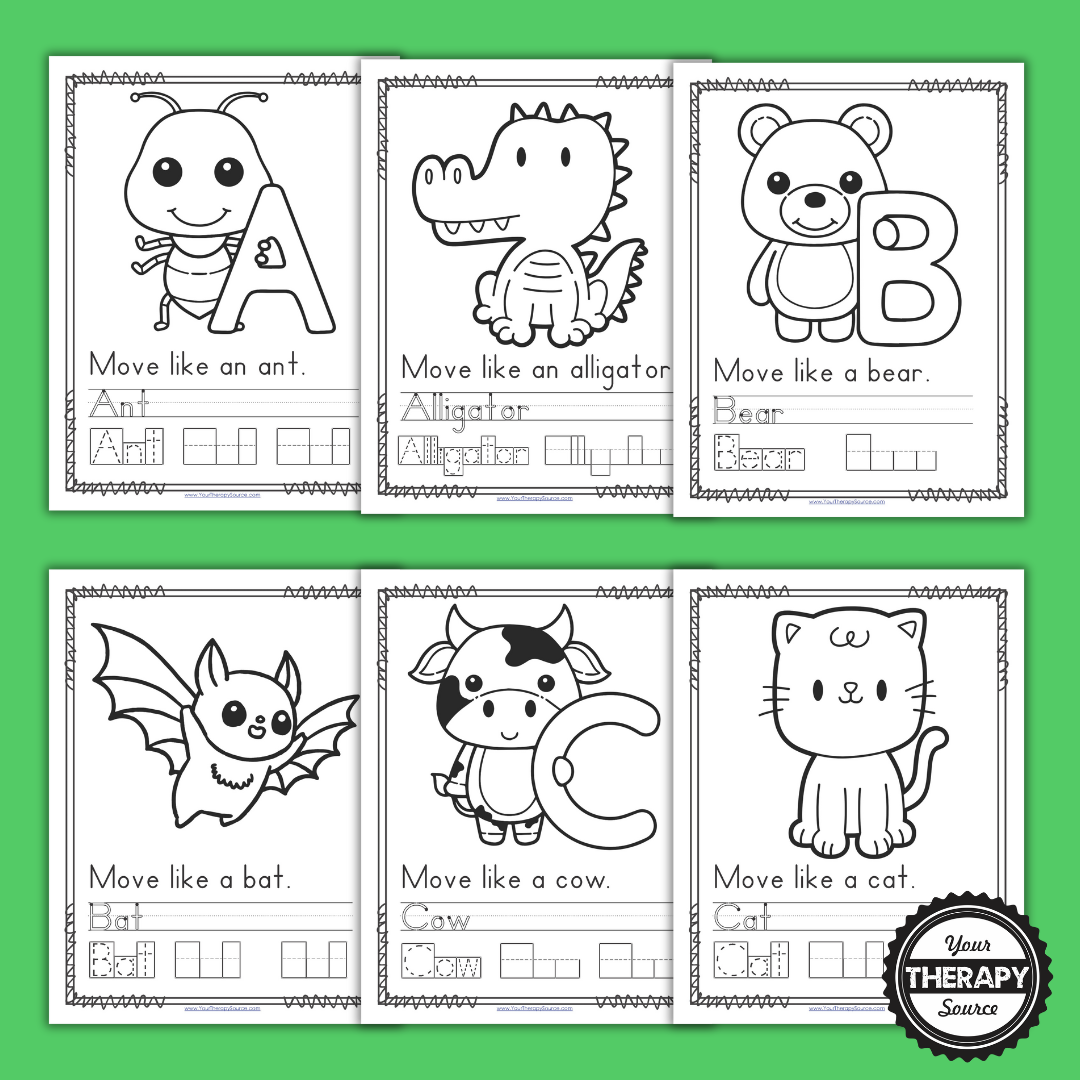Teaching Emotional Intelligence in Early Childhood
Emotional intelligence is the ability to recognize, understand, and manage our emotions as well as the emotions of others. Teaching emotional intelligence in early childhood is important for fostering healthy relationships, enhancing social skills, and promoting mental health. By understanding and managing their own emotions, children can navigate social situations and cope with life’s challenges more effectively. This handout is from the complete ebook – Small Steps, Big Impact: Everyday Parenting Strategies for Lifelong Sucess.
At the bottom of the post, you can download a FREE 5-page handout on teaching emotional intelligence to young children.
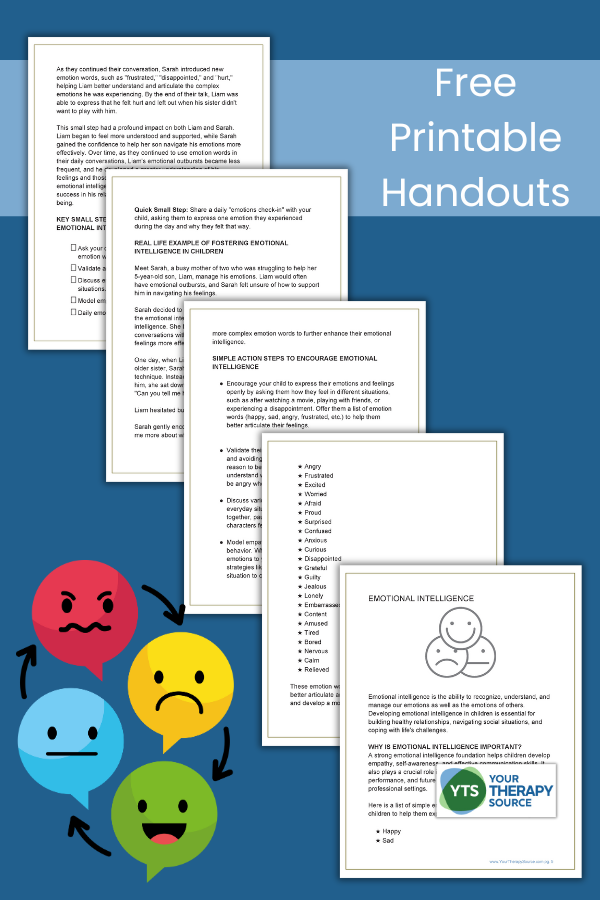
Why is Emotional Intelligence Important?
Developing emotional intelligence in young children is essential for building empathy, self-awareness, and effective communication skills. A strong foundation in emotional intelligence helps children develop:
- Positive relationships
- Enhanced academic performance
- Future success in personal and professional settings
Emotional intelligence also plays a critical role in mental health, helping children manage negative emotions in a healthy way.
Understanding Emotional Development in Young Children
In the context of early childhood development, emotional intelligence involves:
- Recognizing and expressing one’s own feelings
- Understanding the emotions of others
- Responding appropriately in social situations
Early childhood educators and parents play a crucial role in supporting the development of emotional intelligence skills in children. By creating a supportive environment and modeling healthy emotional expression, adults can help children develop these essential life skills.
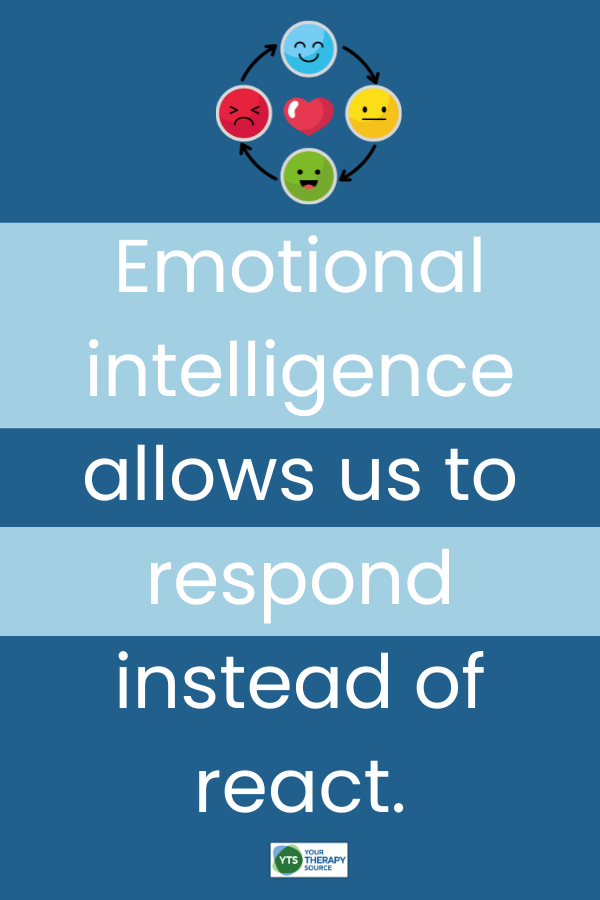
The Basics of Teaching Emotional Intelligence in Early Childhood
Teaching emotional intelligence in early childhood involves several key steps:
- Help children recognize and label their own emotions: Use simple emotion words like happy, sad, angry, and frustrated.
- Introduce more complex emotion words as they grow older to enhance their emotional vocabulary and understanding.
Encouraging Emotional Expression
Encouraging children to express their emotions openly is a great way to foster emotional intelligence.
- Ask children how they feel in different situations, such as after watching a movie or playing with friends.
- Validate their emotions by empathizing with their feelings and avoiding dismissive phrases.
- Instead, say something like, “I can understand why you’re feeling sad about that” or “It’s okay to be angry when something doesn’t go your way.”
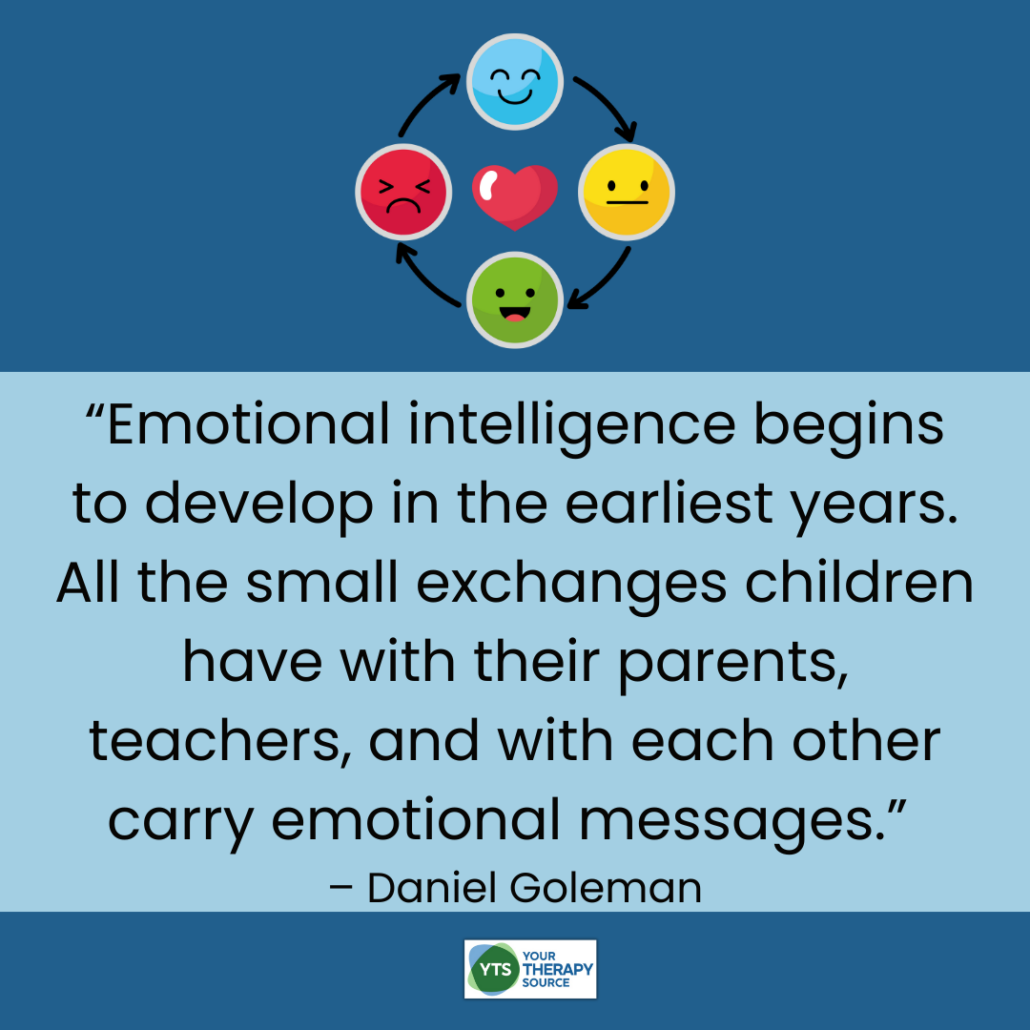
Role of Social Interactions in Emotional Development
Social interactions play a crucial role in the development of emotional intelligence.
- Discuss various emotions and feelings in books, movies, or everyday situations.
- For example, when reading a story together, pause and ask your child how they think the characters feel and why they might feel that way.
- This practice helps children develop empathy and learn to navigate social situations effectively.
Strategies for Teaching Emotional Intelligence Skills
There are various ways to teach emotional intelligence skills to young children. Here are some effective strategies:
Modeling Empathy and Emotional Regulation
Modeling empathy and emotional regulation in your own behavior is one of the best ways to teach children about emotions.
- When you’re upset or frustrated, explain your emotions to your child and demonstrate healthy coping strategies like taking deep breaths or stepping away from a situation to calm down.
- This shows children how to manage their emotions in a productive way.
Using Mindfulness Techniques
Mindfulness techniques, such as deep breathing exercises and guided imagery, can help children develop emotional regulation skills.
- These techniques teach children to focus on their feelings and respond to stressful situations calmly and thoughtfully.
- Incorporating mindfulness into daily routines can significantly enhance a child’s emotional competence.
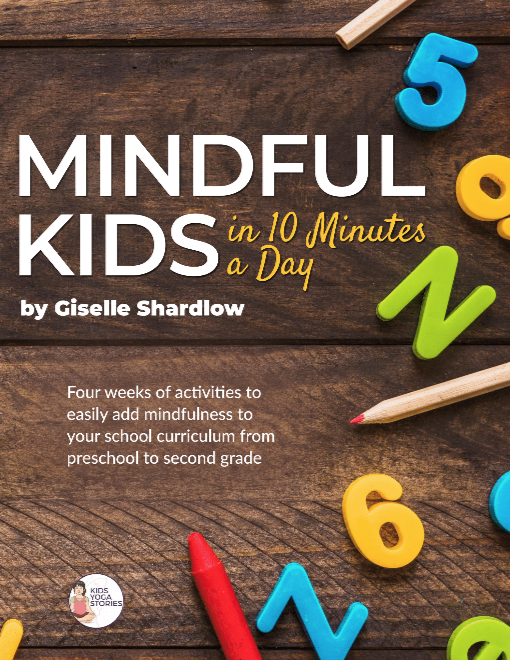
Mindful Kids in 10 Minutes a Day – PreK to 2nd Grade
Incorporating Emotional Learning into Daily Activities
Integrating emotional learning into daily activities and lesson plans is another great way to promote emotional intelligence.
- Use an “emotions check-in” where children express one emotion they experienced during the day and why they felt that way.
- This practice helps children become more aware of their own emotions and those of others.
The Benefits of High Emotional Intelligence in Children
Children with high emotional intelligence tend to have:
- Better relationships with peers and adults
- Greater empathy
- Enhanced problem-solving skills
- A better understanding of social cues and facial expressions
- Improved ability to handle life’s ups and downs
- Healthier relationships
- Improved mental health
Simple Action Steps to Encourage Emotional Intelligence
- Ask About Feelings: Encourage your child to express their emotions and feelings openly by asking them how they feel in different situations.
- Validate Emotions: Empathize with their feelings and avoid dismissive phrases.
- Discuss Emotions: Talk about various emotions in books, movies, or everyday situations.
- Model Emotional Regulation: Demonstrate healthy coping strategies when you are upset.
- Daily Check-Ins: Share a daily “emotions check-in” with your child, asking them to express one emotion they experienced during the day.
Real-Life Example of Fostering Emotional Intelligence
Meet Sarah, a busy mother of two who was struggling to help her 5-year-old son, Liam, manage his emotions. Liam would often have emotional outbursts, and Sarah felt unsure of how to support
him in navigating his feelings. Sarah decided to implement one of the small steps suggested in the emotional intelligence section to foster Liam’s emotional intelligence. She began using emotion words in her daily conversations with Liam to help him identify and express his feelings more effectively.
One day, when Liam was upset after a disagreement with his older sister, Sarah noticed a perfect opportunity to apply this technique. Instead of dismissing his feelings or trying to distract him, she sat down with Liam when he was calmer and asked, “Can you tell me how you’re feeling right now?” Liam hesitated but eventually replied, “I’m mad.” Sarah gently encouraged him to dig deeper, asking, “Can you tell me more about why you’re feeling mad?”
As they continued their conversation, Sarah introduced new emotion words, such as “frustrated,” “disappointed,” and “hurt,” helping Liam better understand and articulate the complex emotions he was experiencing. By the end of their talk, Liam was able to express that he felt hurt and left out when his sister didn’t want to play with him.
This small step had a profound impact on both Liam and Sarah. Liam began to feel more understood and supported, while Sarah gained the confidence to help her son navigate his emotions more
effectively. Over time, as they continued to use emotion words in their daily conversations, Liam’s emotional outbursts became less frequent, and he developed a greater understanding of his feelings and those of others around him. Sarah was able to foster emotional intelligence in her son, setting him up for greater success in his relationships, self-awareness, and emotional wellbeing.
More Resources to Help Teaching Emotional Intelligence to Young Children
- Emotional Activities for Toddlers
- Emotion Regulation Worksheet
- Emotion Check-In
- Feelings and Emotions Activities for Preschoolers
- Coregulation Parenting
By implementing these strategies and utilizing available resources, parents and educators can play a significant role in the development of emotional intelligence in young children, setting them up for a lifetime of positive relationships and emotional well-being.
Download your FREE Handout about Emotional Intelligence
Enter your email to get access to the five page handout on teaching emotional intelligence to children.
